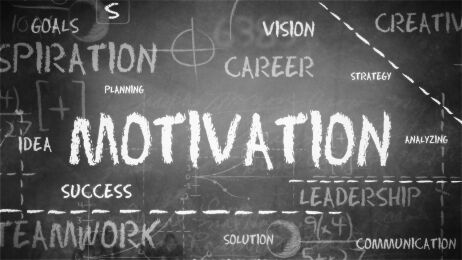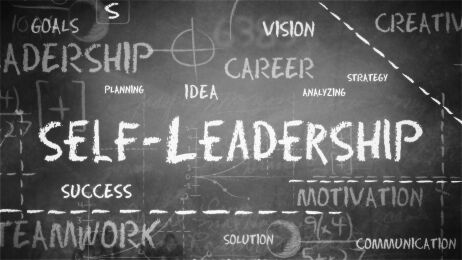Intriguing Insights On Resolving Workplace Conflicts With Body Language (Guest Blog)
Conflict. Confrontation. Frustration. For many, these words are enough to induce dread in their minds. When we’re trying to address difficult scenarios in a workplace, specifically those that lead to some kind of conflict, we tend to indulge in it cautiously and choose our words wisely. But what if we tell you that your body language can be a great indicator of your temperament and highlight your anger issues?
Sometimes we concentrate so much on we’re speaking that we completely bypass how our body language and gestures are coming across. So here are some interesting insights on what our body language and facial expressions are conveying in case of a conflict within a workplace.
How to detect the signs of conflict in the workplace
Now imagine this scenario, as a co-worker within an organization, you can resolve a conflict regarding the productivity of a team member before it escalates into something big. You can notice the way the team member in question walks and his/her facial expressions to detect that something is wrong.
When a team member underperforms, the first thing you need to watch out for is his/her smile. While you may have a genuine smile on your cheeks, he/she will exhibit a fake one, in which the muscles around the lips crease in a way that creates a somewhat awkward-looking grin. This could point out that he/she was uncomfortable describing the situation.
The second sign you may notice is unwavering eye contact. As opposed to popular belief, the longer span of eye contact does not always indicate positive attributes of a person. In fact, a 2016 study discovered that, on an average, we could only maintain eye contact comfortably for 3.3 seconds at a time.
How to use the knowledge about body language to your advantage
When you are trying to control a conflict, start by paying attention to your colleague or team-member, nodding the head gently to give off the feeling that you understand.
Additionally, always ensure that the muscles on your forehead and eyes are considerably relaxed and smooth. This nonverbal gesture lets others know that there is no cause for concern. To learn this small body language trick, stand in front of a mirror, make a facial expression as if you are angry and notice the creased muscles around your lips and eyebrows. The better you identify facial tension, the more your chances are to relax and present positive body language at your workplace.
Also, breathe slowly and avoid crossing your arms when you are talking to a colleague. Breathing fast often indicates stress and anxiety, and your anxiety can have a huge impact on those who work with you on the same team. So whenever you see your co-workers cross their arms a lot while conversing, you need to understand that they might be frustrated about something.
Pay attention to these negative gestures of your co-workers, like pointing their feet away from you or toward an exit, looking to the side or looking away without making eye contact with you, or leaning away from you. These gestures indicate an individual's disinterest in the meeting or conversation.
The process of resolving a workplace conflict:
In this case, you can start by determining your connection with the conflict. Is conflict something you are looking for or do you rather stay away from getting into any kind altercation? Perhaps you have the urge to be right always, and you actually look forward to a confrontation with your opponent to establish one-upmanship.
You must understand conflicts and altercations are as natural as the sun and the rain. Conflict is the catalyst that develops a sense of curiosity in people, especially in a workplace environment. Without contradictory opinions, your workplace will not come across as challenging as it does. It’s normal to have different perspectives and opinions, result in more informed decisions in case of work commitments.
If you never lose sight of your goals and listen to what’s important to the other person, you can achieve fruitful results without causing any harm to anyone.
Now more often than not, people associate negativity with conflict of interest, with one winner and one loser in the end. If you also think that way, you should probably consider changing your attitude. You should always make an effort to perceive conflict as an opportunity to treat other individuals in your workplace with the respect they deserve and be open to their differing values, ideas, and perspectives.
Additionally, you can take conflict as a scope to express your requirements, ideas and concerns as well, but always ensure to be respectful in the process. Snarling at the other person will not win you any friends in the workplace. You may win an argument that way, but you’ll probably lose respect.
So when you have a different point of view than the person you are involved in a conflict with, you must remain calm and composed, in perfect control of your expressions, actions, and your choice of words. Do not forget your desired outcomes considering you have to spend a better part of your day with your colleague, the primary one being resolving it effectively and achieve the outcomes that are satisfying for both parties involved.
Practice the art of listening
Most conflicts or altercations primarily stem from an individual’s inability to listen to the other person. So you must work on this skill in case of conflict resolution. Being attentive and listening properly allows the situation to be under control easily, as being heard by the other person helps to contain the annoyance.
So whenever you find yourself embroiled in an altercation, make sure to listen to the other person carefully. This way half the battle will be won then and there, without putting much effort.
When conflicts occur, people are generally so eager to present and justify their point that they never care to listen to the other person. This further worsens the situation. Most altercation will get resolved if people within the workplace listen first and speak later. Listening to the other person allows you to have a clear understanding of the reason for conflicts.
Armed with this knowledge, you can use soothing body language and discussion to resolve conflict and spot future issues down the road.
Author Bio: Emma Benetton has been associated with essay writing service in EssayGator.com for many years now. She has composed numerous effective assignments for the understudies.


